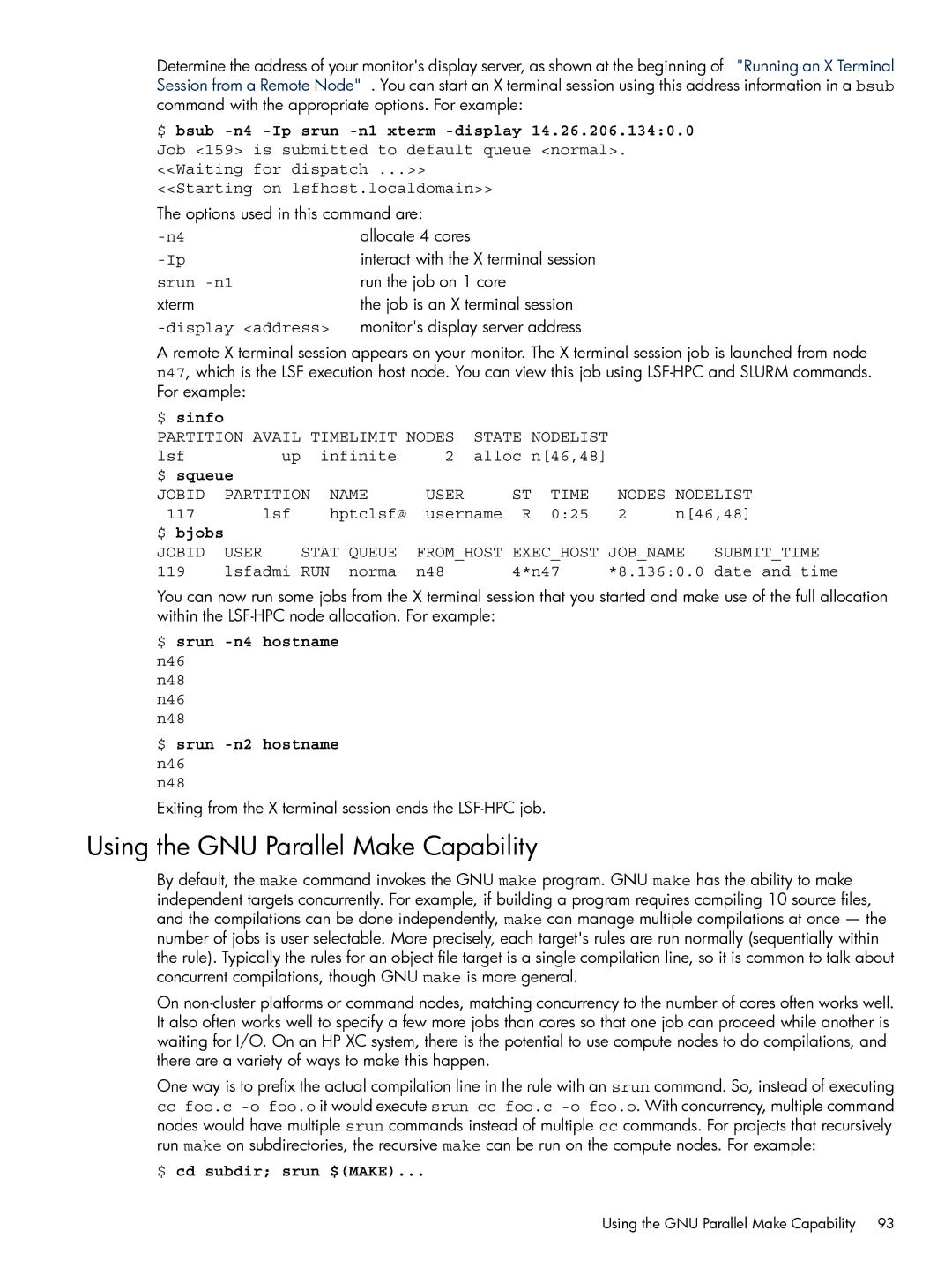Determine the address of your monitor's display server, as shown at the beginning of "Running an X Terminal Session from a Remote Node" . You can start an X terminal session using this address information in a bsub command with the appropriate options. For example:
$ bsub -n4 -Ip srun -n1 xterm -display 14.26.206.134:0.0
Job <159> is submitted to default queue <normal>. <<Waiting for dispatch ...>>
<<Starting on lsfhost.localdomain>>
The options used in this command are:
allocate 4 cores | |
interact with the X terminal session | |
srun | run the job on 1 core |
xterm | the job is an X terminal session |
| monitor's display server address |
A remote X terminal session appears on your monitor. The X terminal session job is launched from node n47, which is the LSF execution host node. You can view this job using
$ sinfo |
|
|
|
|
|
|
|
|
|
PARTITION AVAIL TIMELIMIT NODES | STATE NODELIST |
|
|
| |||||
lsf | up | infinite | 2 | alloc n[46,48] |
|
|
| ||
$ squeue |
|
|
|
|
|
|
|
| |
JOBID | PARTITION | NAME | USER | ST | TIME | NODES NODELIST | |||
117 | lsf |
| hptclsf@ | username R | 0:25 | 2 | n[46,48] | ||
$ bjobs |
|
|
|
|
|
|
|
|
|
JOBID | USER | STAT QUEUE | FROM_HOST EXEC_HOST JOB_NAME | SUBMIT_TIME | |||||
119 | lsfadmi RUN | norma | n48 | 4*n47 | *8.136:0.0 date and time | ||||
You can now run some jobs from the X terminal session that you started and make use of the full allocation within the
$ srun -n4 hostname n46
n48
n46
n48
$ srun -n2 hostname n46
n48
Exiting from the X terminal session ends the
Using the GNU Parallel Make Capability
By default, the make command invokes the GNU make program. GNU make has the ability to make independent targets concurrently. For example, if building a program requires compiling 10 source files, and the compilations can be done independently, make can manage multiple compilations at once — the number of jobs is user selectable. More precisely, each target's rules are run normally (sequentially within the rule). Typically the rules for an object file target is a single compilation line, so it is common to talk about concurrent compilations, though GNU make is more general.
On
One way is to prefix the actual compilation line in the rule with an srun command. So, instead of executing
ccfoo.c
$ cd subdir; srun $(MAKE)...
Using the GNU Parallel Make Capability 93
